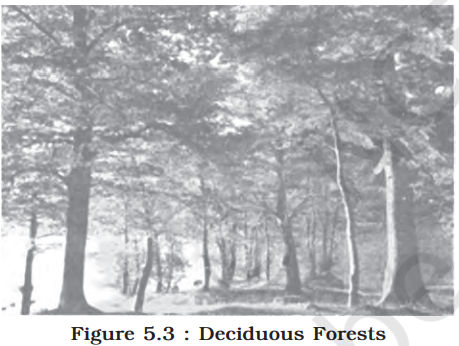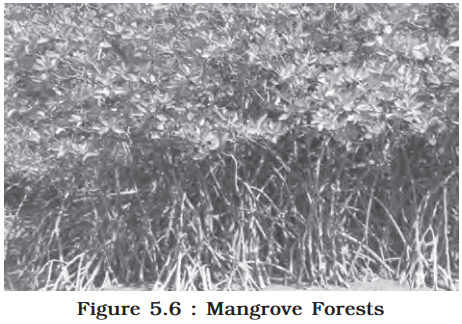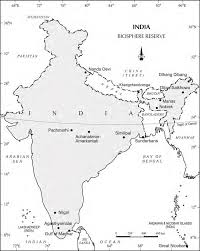Natural Vegetation – Complete Guide For Class 11 Geography Unit 2 Chapter 5
Welcome to iPrep, your Learning Super App. Our learning resources for the chapter, “Natural Vegetation” in Geography for Class 11th are designed to ensure that you grasp this concept with clarity and perfection. Whether you’re studying for an upcoming exam or strengthening your concepts, our engaging animated videos, practice questions and notes offer you the best of integrated learning with interesting explanations and examples.
As you engage with this chapter, you’ll discover not only the types of natural vegetation that flourish across India but also the intricate relationships between these ecosystems and the wildlife they support. The lessons within this chapter will guide you in understanding how various factors, such as climate, soil, and human activity, shape the distribution of these vital plant communities. This holistic approach will enhance your appreciation for the natural world and its critical role in sustaining life on our planet.
Objectives of Learning Natural Vegetation: A Study of India’s Forests
This chapter explores the diverse types of natural vegetation found in India, including forests, grasslands, and wetlands. It discusses the factors that influence the distribution of vegetation, the importance of forest conservation, and the challenges faced by wildlife in India.
Natural vegetation refers to the plant life that grows naturally in a particular region, without human intervention. India is home to a wide variety of natural vegetation, ranging from dense tropical rainforests to arid grasslands. This chapter delves into the different types of forests found in India, their characteristics, and the factors that influence their distribution.
Now that we have explored the importance of the chapter, let’s outline the objectives of studying it.
- To understand the different types of forests found in India.
- To explore the factors that influence the distribution of vegetation.
- To analyze the importance of forest conservation in India.
- To examine the challenges faced by wildlife in India.
Now let’s explore the various sections of the chapter.
Firstly, in order to understand the variety of forests in India, let’s delve into the Types of Forests section of the chapter “Natural Vegetation.”
Types of Forests
India’s forests can be classified into several types based on their characteristics and the dominant tree species.
- (i) Tropical Evergreen and Semi Evergreen forests
- These forests are found in areas with high rainfall and warm temperatures.
- They are characterized by tall, dense trees with evergreen leaves.

- (ii) Tropical Deciduous forests
- These forests are found in regions with a distinct dry season.
- The trees in these forests shed their leaves during the dry season.

- (iii) Tropical Thorn forests
- These forests are found in arid and semi-arid regions.
- The trees in these forests have adapted to survive in dry conditions.

- (iv) Montane forests
- These forests are found in mountainous regions, with varying characteristics depending on altitude.

- (v) Littoral and Swamp forests
- These forests are found along coastlines and in swampy areas.

Now, in order to understand the importance of preserving forests, let’s explore the Forest Conservation section of the chapter “Natural Vegetation.”
Forest Conservation
Forest conservation is essential for maintaining ecological balance, protecting biodiversity, and providing various ecosystem services.
- Social Forestry:
- Social forestry involves planting trees on non-forest lands to meet the needs of local communities.
- Farm Forestry:
- Farm forestry involves planting trees on agricultural land to provide shade, fuel, and fodder.
Now, in order to understand the threats to wildlife, let’s delve into the Wildlife section of the chapter “Natural Vegetation.”
Wildlife
- India has a rich diversity of wildlife, but human activities have led to habitat loss and declining populations of many species. Some species are now at the brink of extinction.

Important Reasons for Declining Wildlife
- Habitat loss, poaching, pollution, and human-wildlife conflict are some of the major causes leading to the decline in wildlife populations in India.
Now, in order to understand the measures to protect wildlife, let’s explore the Wildlife Conservation in India section of the chapter “Natural Vegetation.”
Wildlife Conservation in India
- India has implemented various measures to conserve wildlife, such as establishing national parks, wildlife sanctuaries, and tiger reserves.
Biosphere Reserves
- Biosphere reserves are areas designated for conserving biodiversity and promoting sustainable development.
- India has a network of biosphere reserves that protect ecologically sensitive areas.

Finally, as we have gained comprehensive knowledge about the chapter “Natural Vegetation“, let’s reflect on the overall learning value of this important lesson.
Overall Learning Value of the Chapter:
India’s natural vegetation is a valuable resource that plays a crucial role in the country’s ecology and economy. Conserving forests and protecting wildlife are essential for maintaining the health of India’s ecosystems and ensuring a sustainable future.
Let’s Conclude
In conclusion, CBSE Class 11th Geography Chapter on “Natural Vegetation” provides a thorough understanding of India’s diverse plant life and its distribution across various climatic regions. Through this chapter, students gain insights into the types of forests in India, including tropical, thorn, montane, and swamp forests, along with the unique ecosystems they support. The chapter emphasizes the significance of forest and wildlife conservation, exploring topics like social forestry, farm forestry, and the establishment of biosphere reserves. Studying CBSE Class 11th Geography Chapter “Natural Vegetation” equips students with a deeper awareness of the environmental importance of vegetation, helping them recognize the need to protect and sustain our natural resources.
By mastering the concepts in CBSE Class 11th Geography Chapter “Natural Vegetation,” students can appreciate India’s ecological diversity and understand the interconnectedness between natural vegetation, wildlife, and human impact. This chapter empowers learners to consider conservation efforts that ensure the survival and well-being of these invaluable resources for future generations.
Practice questions on Chapter 5 - Natural Vegetation
Get your free Chapter 5 - Natural Vegetation practice quiz of 20+ questions & detailed solutions
Practice Now








